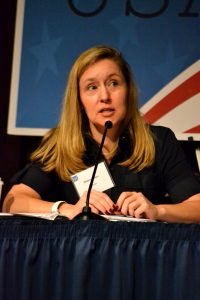Who Cares About Consistency?
[powerpress]
 The DC Circuit Court’s oral arguments largely ignored fundamental inconsistencies with the FCC’s regulations—problems that engineers recognize as vital to operation of the Internet.
The DC Circuit Court’s oral arguments largely ignored fundamental inconsistencies with the FCC’s regulations—problems that engineers recognize as vital to operation of the Internet.
In the latest High Tech Forum podcast, founder Richard Bennett addresses some of these inconsistencies with Shane Tews of the American Enterprise Institute and Vrge Strategies. The two discuss the technological problems with the FCC’s Title II regulation that stem from the Commission’s attempt to extend telephone system regulations to broadband Internet. This has created inconsistency after inconsistency.
A clear example involves the FCC’s attempts to regulate the Domain Name System (DNS). In its latest regulations, the FCC tries to define DNS as a routing service – somewhat analogous to call forwarding for telephones. But for broadband Internet, as Richard and Shane discuss, this analogy is flawed and imperfect, because DNS has a very different purpose. While DNS helps the Internet route email, it has no role in ordinary IP routing and experiments in using DNS as a general routing function have failed.
One of the FCC’s inconsistencies involves the reclassification of DNS but only when provided by an ISP. Under the new rules, when an edge provider such as Google provides DNS, the FCC classifies it as an information service. But when a broadband ISP provides DNS as part of an Internet service, DNS becomes a Common Carrier service.
Make sure to listen to the podcast for a full explanation of the DNS question as well as discussion around Judge Sri Srinivasan’s “peculiar” question about whether it makes sense for Wi-Fi and LTE Internet services to be regulated differently. This question is especially important given rapid improvements across the board–speeds increasing to the gigabit range-that will make wireless the “first pipe” for most people. Local area and wide area networks have entirely different sets of technical issues, of course, but a deregulatory approach is the better way to arrive at consistency than is the FCC’s plan.



